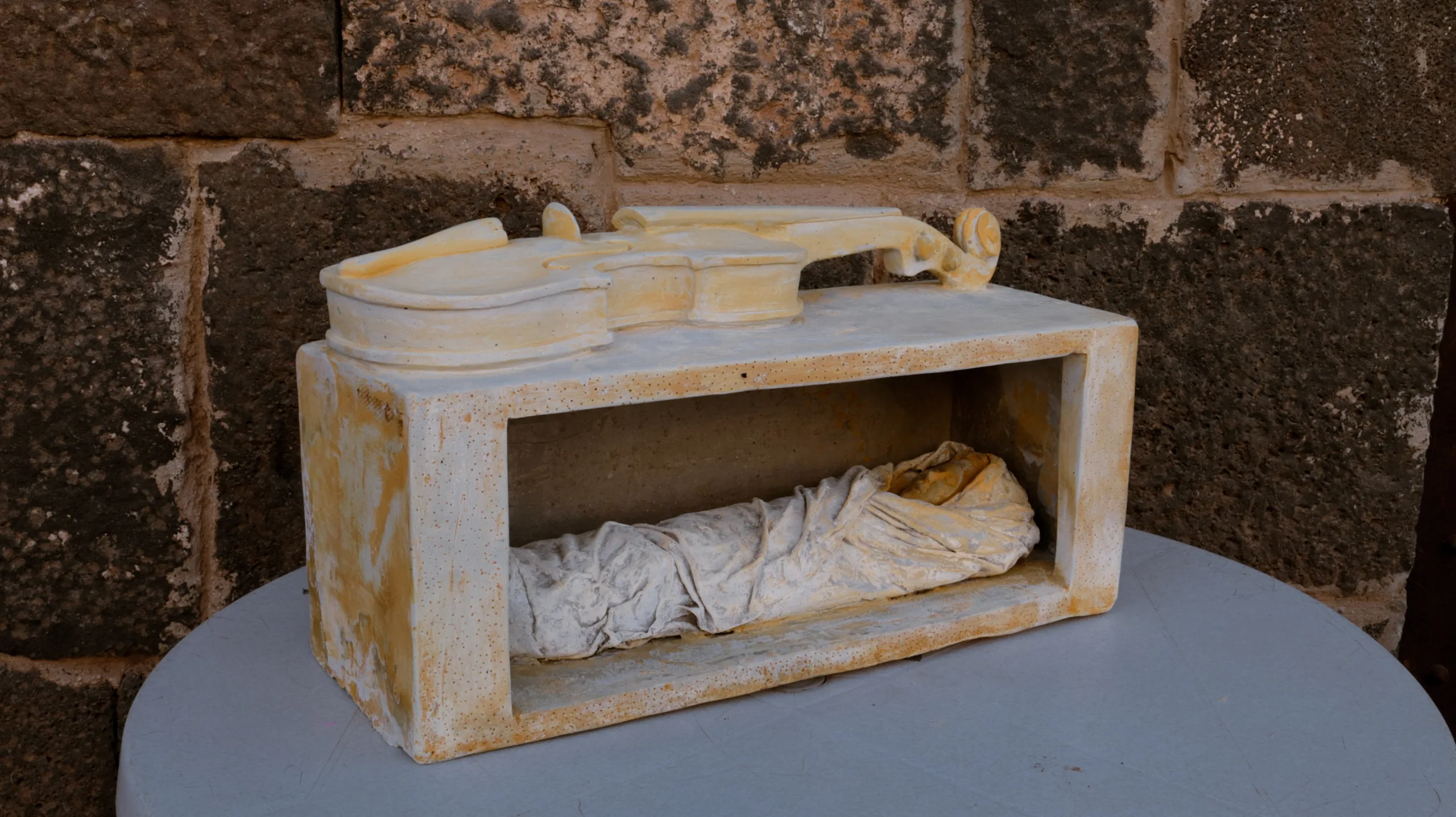In the heart of the historic city of Shahba, an extraordinary art evening transformed the old market into a space of confrontation and testimony. The exhibition, titled “Scream”, held on September 29th of this year, was not merely a cultural gathering, but a visual outcry against the horror the province endured in July, when civilians were subjected to brutal attacks that included public executions, beheadings, and the kidnapping of families, both young and old.
One of the most striking sculptures depicted a severed head drenched in blood. Artist Walid Nofal described it, saying:“I never wished to present a sculpture immersed in blood. But this was not a choice; it was forced upon us after this criminal war.” He added, “I created the sculpture of a severed head swimming in blood after witnessing the slaughter of a young man from Sweida with a knife, the same way one slaughters a sheep. That moment made me determined to convey the incident with full realism.”
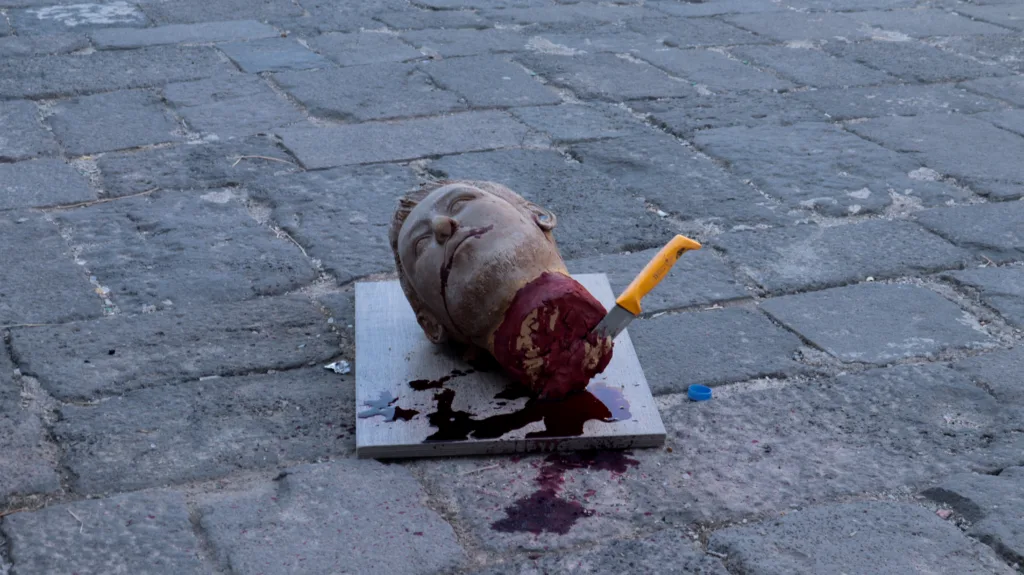
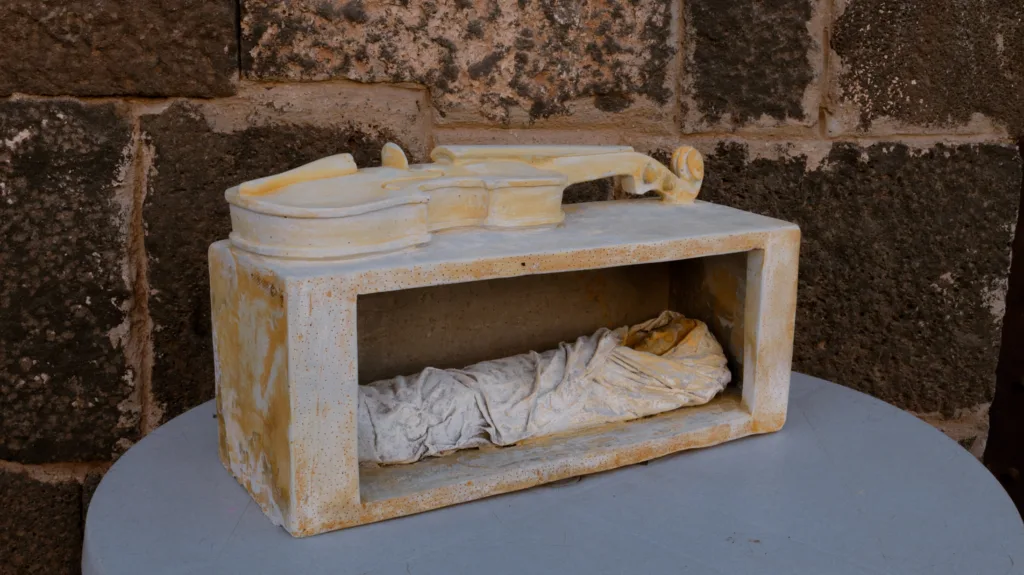
For him, such shock is necessary, as it falls within the artist’s responsibility. “Sometimes, as artists, we bear the duty of recording the moment and the event artistically through sculpture. I deliberately made the work direct and realistic so it would leave a lasting resonance with everyone who sees it, to ensure our message is delivered and to stress our demand for accountability against those who committed such crimes.”
Alongside this piece, Nofal presented another work depicting a coffin under a musical instrument, a moving reference to the children who were martyred during the massacre. He explained:“The children who were killed were not only excelling academically, but they were also musicians who played instruments. They were artists in every sense of the word.”
The atmosphere of the exhibition was charged with both nostalgia and anger, as elders, youth, and artists gathered to discuss the role of art in confronting injustice and its ability to revive a city suffocating under the silence of atrocities.
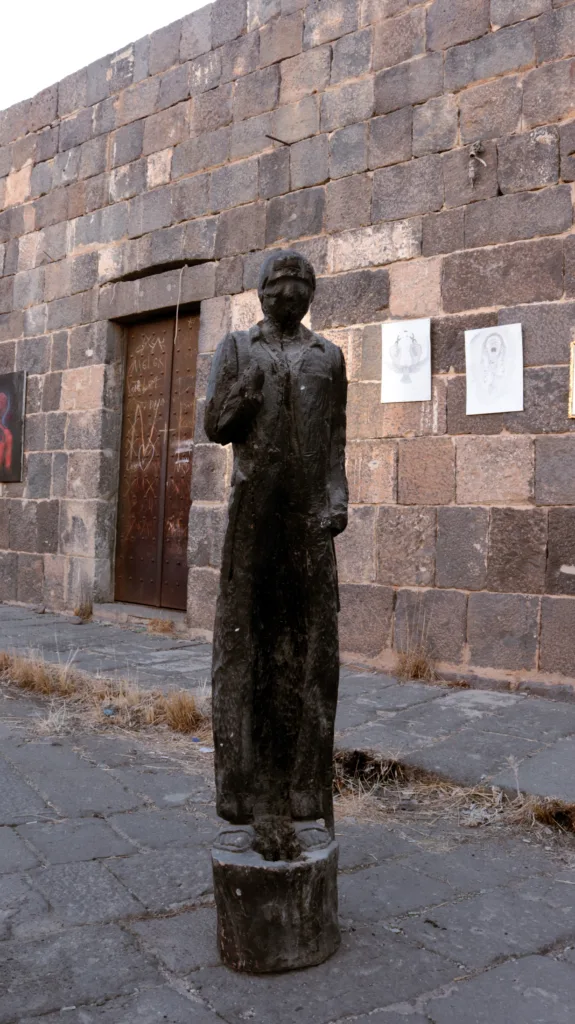
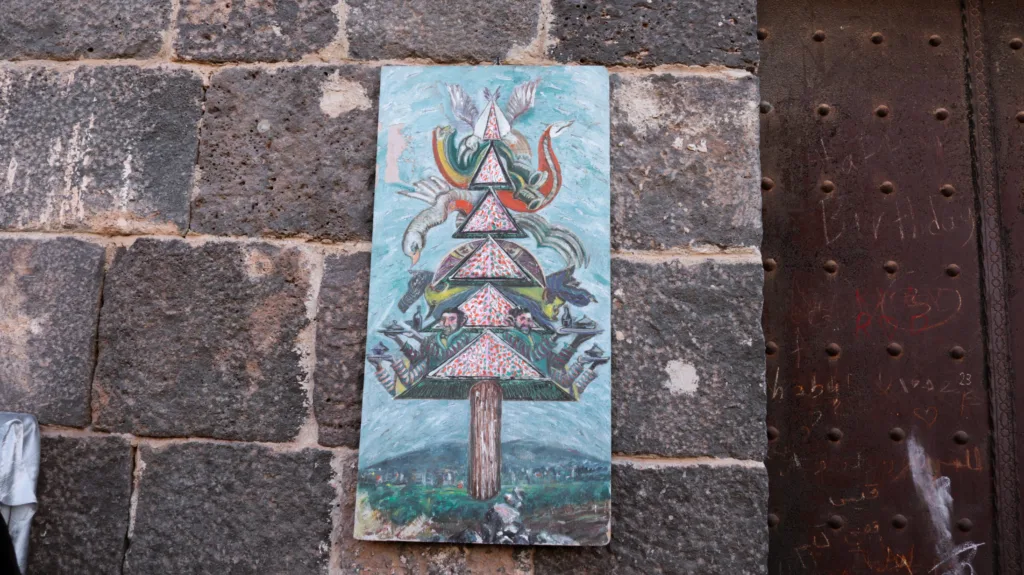
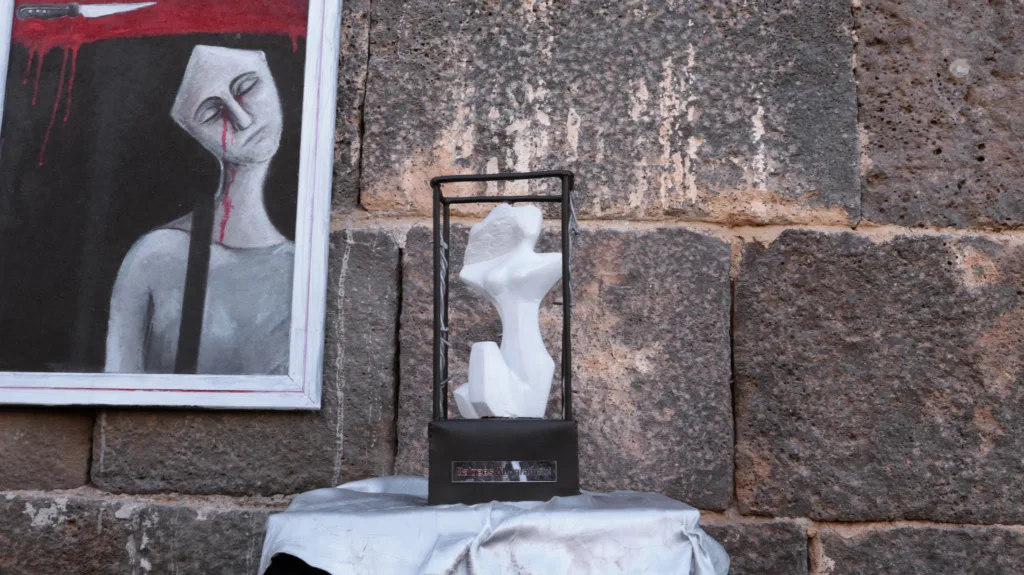
Artist Laila Jabr, one of the organizers and participants in the exhibition, said:“We were honored by the presence of community leaders at the opening, and the exhibition had wide resonance and clear success.” She added: “We chose this timing to document what happened in Sweida, so that our works remain witnesses to the violations and crimes committed.”
The exhibition proved that art is not a luxury in times of catastrophe, but rather a tool of protest and testimony. It transforms suffering into collective memory and makes visible horror a means of expressing the pain of the people of Sweida— a scream against all those responsible for these events.
